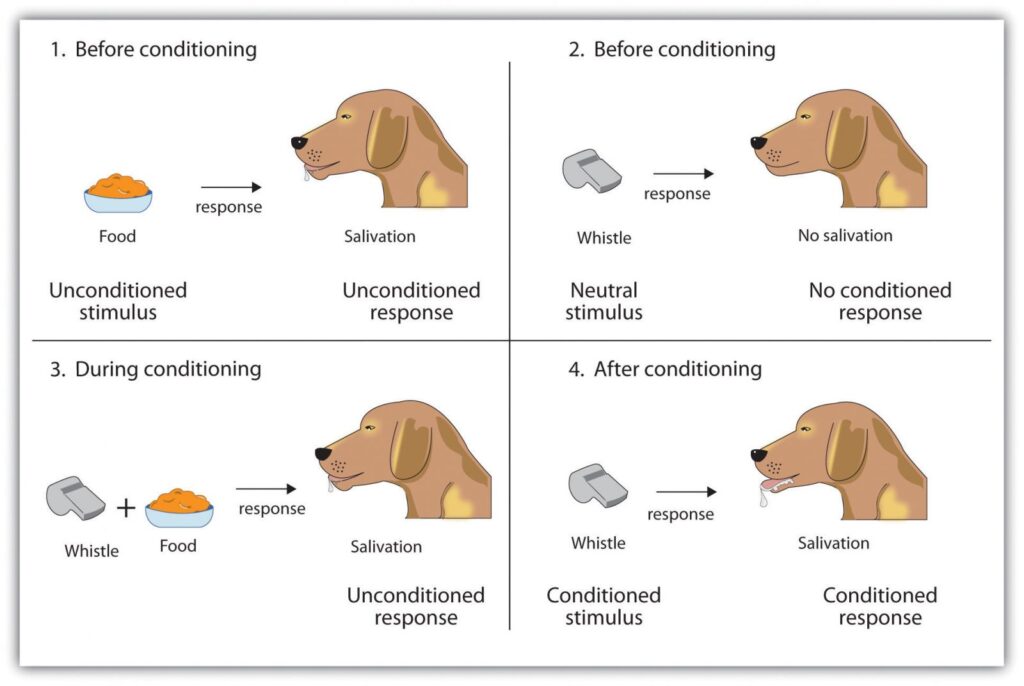The Causes of Prejudice: How Do We Get Prejudiced? (Part 2)

When We’re Asleep, We Can’t See
Have you ever seen people who are hypnotized? People are “put to sleep” by a suggestion and then told to do something on command, without thinking. These people are not aware that they’ve been hypnotized and are told that when they are awakened, they won’t remember that they’ve been hypnotized – or that they were asked to do something.
Prejudice is like this. We are “put to sleep” by people who tell us what to think and do. We “act out” what we are told. We react to a situation as if it were real – unaware that we’ve been hypnotized by someone else’s beliefs.
People who condition others are most often afraid of something new or different. Fear awakens us to a new realization.
Discovery #12: Acting in prejudiced ways is not orderly or safe. It is acting out of ignorance.

Have you heard of brainwashing? Originating in the early 1950s, during the Korean War, the process of brainwashing was used to “wash” the mind of beliefs so other ideas could be substituted. Think of what it must be like to be a prisoner of war, isolated from companions and deprived of food and sleep. Imagine being endlessly badgered with constant political propaganda over periods of weeks and months, even years.
It’s difficult to imagine what a horrifying experience this must have been, but it is a signal to us all to think:
Do we have just grounds for everything we believe? Do we have sufficient knowledge to act on someone else’s point of view?
When we’re asleep, we cannot see. We need to wake up – and stay awake.
Discovery #13: When we become prejudiced by not being aware, we become numb to life around us. We accept the opinions of other people without finding out the facts for ourselves.
The following are examples of prejudice. As you look at them, maintain your scientific mode of understanding, and explore all parts of the machinery of your thinking. Ask yourself: “Do I have any of these prejudiced thoughts?” Be honest with yourself!
- Men are stronger and more intelligent than women.
- Women are gentler than men.
- White people are better business people than black people.
- Black people are more athletic than white people.
- Younger people are better workers than older people.
- To have peace, we must fight.
- Authorities don’t ever need to be questioned.
- To be good we must accept what we’re told to do.
- Ambition is good; winning is everything.
- The more money you have, the better person you are.
Are you not sure about some of these? Which ones? Why do you think you share these thoughts or feelings? Do you think they are factual?

The Ten Mental Steps to Conflict
Let’s say someone taught you to think of people across the street from you as “bad.” This kind of thinking creates fear, which leads to conflict.
Here are the ten steps to such a conflict:
- That person across the street is “bad.”
- That person is different from me.
- That person is “my enemy.”
- That person is a threat to my safety and security.
- That person is a threat to my group’s wellbeing.
- I must defend myself against my enemy.
- I must defend my group against “them.”
- I feel inner conflict.
- I project my conflict onto my “enemy.”
- We’re going to fight!
Discovery #14: There is only one enemy. It’s the one we create in our brains.
How do we get prejudiced? We look without really seeing, we act on images we’ve been conditioned to believe, and create enemies that exist in only place – our minds.
How many of us do this? All of us!

The Bells and Knots of Conditioning
The “Fight or Flight” Response
Can you imagine having to make a decision about whether to either save your life, or stay and defend your home? Conflict situations like this happen every day in countries around the world where people are forced to flee their homes or stay and fight.
A simpler example: Say you’re walking down the street and see a mean-looking black-and-white dog. It growls at you and appears getting ready to attack you. You clearly feel fear and you realize you either have to run away or you may have to fight the dog.
This is called the “fight or flight” response. Your brain wants you to survive, and so it searches for the best way to make this happen. Your mind and body go through instantaneous changes when you are faced with this challenge.
Discovery #15: The “fight or flight” response is there to help you survive. It’s an instinct to protect you from harm. It’s a healthy and natural response to real danger.

Let’s say, a few weeks later, you see another black-and-white dog. This one is wagging its tail and being friendly, but you feel afraid. You are re-acting to the memory of the previous dog. This is how the human brain operates! Your first encounter prejudices you to believe that you need to defend yourself against ALL black-and-white dogs.
The next time you notice how someone is different from you, stop and remember what we all have in common: When we’re scared, we either want to fight or run away.
Pavlov’s Dogs
Ivan Pavlov was a Russian surgeon who developed the concept of the “conditioned reflex.” In a well-known experiment, every time he fed his dog, no matter what time of day, Pavlov would ring a bell.
Over time, the dog came to understand that when he heard a bell, he was going to eat. The dog associated the bell with the sight of food, and when the dog heard the bell, he would salivate, producing water at the mouth in expectation of the delicious food. Then, Pavlov would feed him.
One day, to try something different, Pavlov rang the bell but didn’t give the dog food. What amazed the scientist is that the dog salivated anyway. Days later, when Pavlov again rang the bell, even though the dog didn’t know if he was going to get food or not, he salivated.
Pavlov discovered that he had conditioned his dog to salivate — to react in a certain way — by creating an association between the sound of a bell and food.
In our daily life, people often “ring” a certain “bell” that we react to — without thinking. For example, if someone calls you a name you don’t like — is there a kind of bell that goes off inside you, making you want to fight or run away? If someone tells you to do something you don’t want to do — does a bell inside ring with anger? Fear? Shame?

Taught by His Students
B.F. Skinner was a psychologist who became famous for studying human conditioning and the way people respond to rewards and punishments. He was also a teacher.
One day, his students decided to teach him something about conditioning. They were all aware that Professor Skinner, when he lectured, paced up and down the front of the classroom. They devised a plan that they had the power to get him to stand on only one side of the classroom.
That day, whenever Professor Skinner walked to the right side of the room as he was teaching, the students would listen attentively and raise their hands to ask many questions. When he walked to the left side of the room as he paced, the students would act bored, not ask questions and didn’t pay attention.
By the end of class, Professor Skinner, who normally paced back and forth continually, was pinned up against the right side of the room! He liked hearing the positive remarks and responded well to the rewards his students gave him. The lesson for that day was — the use of reward and punishment creates conditioned reactions.

False Image, False Alarm
In the 1970s, in a California town called Sebastopol, townspeople had contacted a town in Russia of the same name. It turns out that the California town had actually been named by Russians within the last century and wanted a “Sister City” relationship with the Russian people to take some steps toward fostering peace between the two countries.
Some of the Russians decided to visit the U.S. town. Many people were nervous because, to them, the Russians were still “the enemy” — a concept that had been ingrained in them by their upbringing and the air raid drills they had experienced as children.
When the Russians arrived, they were not what the Californians had expected. They were dressed like Americans, looked like Americans, walked like Americans — and some spoke better English!
The Californians were confused. Some didn’t want to speak to one of “them,” because they were afraid. Instead, one of them picked a shy lady to speak with, who returned his hello. When he said to her that it was interesting to have Russians visit us, she said, “Oh, yes, we are glad to be here.” He had thought that she was “one of us,” but in a split second she became “one of them” — his supposed enemy!
In that next moment, he had a “fight or flight” reaction. He froze and felt himself feel the urge to protect himself or run away. The bell in his brain was ringing loud and clear. “Danger! Danger! Enemy attacking!” While all this was going on in his head, his stomach knotted up, his palms were sweating, his eyes widened, and his heart was beating fast! He was ready to fight her, or to run away from this threat.
But where was the threat? What was making him prepare to fight or run away? It was his prejudiced vision of Russians, conditioned by years of repeated judgments. But now, right in front of him, was reality, in the form of a real person who was nothing like the “enemy” his conditioned mind had envisioned. And she spoke perfect English!
Russians are wonderful people who want peace as much as we do. This experience shows how someone can fear and hate other people — even kill them and believe it’s necessary to do so — in the name of self-protection.
Discovery #16: Unaware of our programming, we act as if our hatred is necessary. But WE are the ones who keep it alive.
If we want to NOT hate, all it takes is insight to become AWARE of whether we are acting based on a real situation, or reacting to an imagined fear.

The Prejudice Knot
A confusing, tied-up knot in our brain, like prejudice, can hurt the person thinking it. It can also hurt the person who’s the object of that thinking. Here’s how the knot looks:
Here’s how the knot develops:
- A basic thought becomes a statement of information.
“I think that all people with blue skin are mean, greedy and distrustful. I know this because my best friend told me.”
- The statement is accepted without question and repeated by others.
“I was told by experts that all people with blue skin are mean, greedy and distrustful. These people know what they’re talking about. Since I’m too young to know what I’m doing, I can’t question them. They’re the ones who know and, therefore, they must know what’s true and right for me.”
- The thought continues in the wrong direction and keeps going.
I believe what they tell me is true. People with blue skin are mean, greedy and distrustful. I shouldn’t put up with such people — not even tolerate them. When I meet a blue-skinned person, I automatically think, “That person is mean!” “That person is greedy!” “That person is distrustful!”
- The knot gets tighter.
I can’t trust them, so I’m afraid of them. Being afraid of them, I want to protect myself. So, I join other people who think the way I do, so we can feel safe and secure. So our friends, family, leaders, country can feel safe and secure, and together we can defend against all blue-skinned people who are mean, greedy and distrustful.
“Why should we defend against all blue-skinned people who are mean, greedy and distrustful? Because they threaten four values and beliefs, customs and traditions, our heritage, our nation, our birthright, our way of life – everything we stand for!”
If blue-skinned people are a threat to US, and are against everything we stand for, they must be “the enemy”! And, being our “enemy,” they must be terrorists. And if they are terrorists, we must be “freedom fighters.” And if we are freedom fighters, we must be proud of those who are our “heroes” in our “war” – against the blue-skinned people who are mean, greedy and distrustful. We must defend against THEM, because we have no choice, do we?
Elements of Knot-Like Thinking – Defective Wiring in Our Brain
Over time our brain, like a worn-out mechanical device, can cause trouble because its wiring is defective. Knot-like thinking ties up the wires in our thought process and keeps us from seeing things as they are. As amazing as it sounds, people often “wake up” to discover that, for most of their lives, they believe something that isn’t true.
To free ourselves from the wires in our own brains, let’s learn to recognize knot-like thinking – in others, and also in ourselves.
Repetition: Saying and hearing the same thing, over and over again.
Example: Hallmark: “When you care enough to send the very best.”
Question: Do you have to buy a Hallmark card to send the very best?
Comparison: Comparing one group of people with another.
Example: “Those people are bad.” “We are good.”
Question: How are we, and those people, really different?
Projection: Throwing an image in our minds onto another person.
Example: “All foreign people are a threat to our way of life.”
Question: Really? ALL foreign people? In what way?
Identification: Becoming part of a group in order to “belong.”
Example: “I belong to a social club – a family I can relate to.”
Question: What makes you want to “identify” with this group?
Authority: The power to command, demand obedience, enforce laws.
Example: “We are the best country in the world. Believe it!”
Question: What makes this country the best? The best in what way?
Reinforcement: Rewarding behavior with positive words or actions to achieve a certain effect.
Example: “You’re a good kid. Do what I say and I’ll give you money.”
Question: What exactly do you have to do for that money?
Belief: Accepting something, with no proof that it’s true.
Example: “Our beliefs are the only true beliefs!”
Question: How can they be the ONLY true beliefs?
Discovery #17: It’s important to see that there are many authorities who can be helpful in your life. But it’s also important to be able to tell the difference between authorities who are helpful and those who are not.
You and I were born into a world already full of conditioned and prejudiced thinking.
The culture we were born into was programmed into us — often without question — and continues to be programmed into us on a daily basis.
So many things we believe today may be an old “tribe-like inheritance” we’ve been conditioned to claim as our birthright. In a way, our ancestors are us.
If this is so, perhaps we should ask ourselves:
How do we find out if anything we’ve been taught is true, and still works for us today?
How do we learn whether our belief system is healthy or destructive?
Are we acting in prejudiced ways? If so, don’t we want to make some changes?